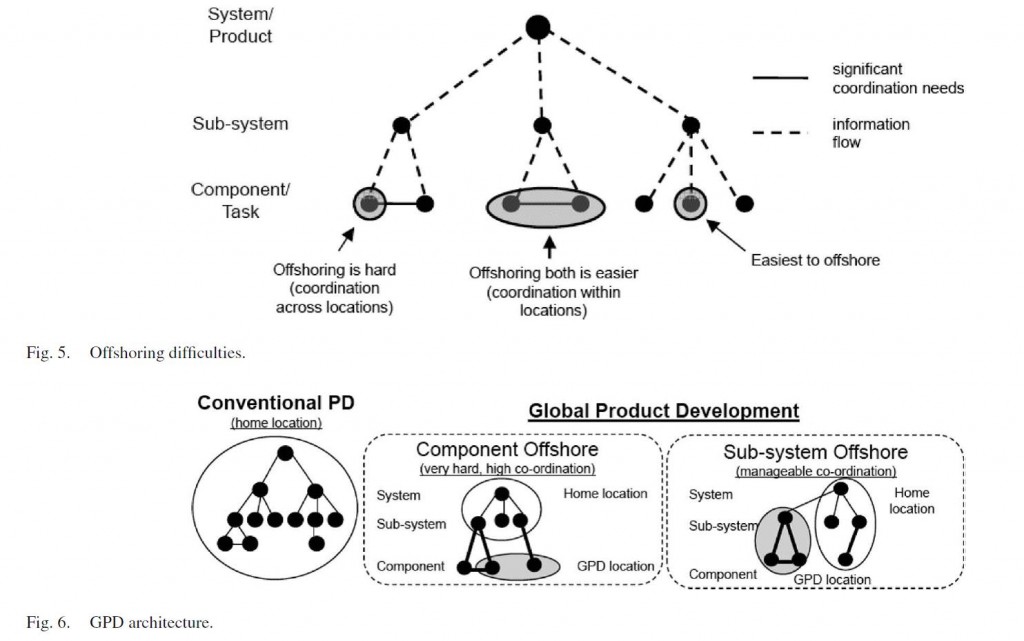There are many similarities between Clean Energy Capital Projects (i.e. a new Clean Powerplant or Wind Farm) and Complex Engineered Product Systems which can benefit from the novel approaches to Global Project organization.
In the Global Product Development industry, a leading method to organize Complex Engineered Product Systems (i.e. aerospace, automotive, electronics) has been developed by Steven D. Eppinger, MIT. He applies systems engineering methodology to complex product development by considering not only the technical aspects, but also the work and people aspects, and especially interactions and iteration between all three. A good example of his work is noted in this paper, and he has written an excellent related book on his application of the analytical method Design Structure Matrix which has many case studies, including BMW and Pratt and Whitney. An example diagram from his above paper discusses one aspect of the Global Application of Product Development:
There is much more to his approach, with the above diagram “telling a thousand words”.
This same overall approach can also be applied to Clean Energy Capital Projects, as at the heart they are Complex Engineered Systems, even though most Clean Energy Capital Projects are not mass manufactured products and are often custom engineered for site, size, customer, environment, politics, etc. Today and tomorrow’s Clean Energy Projects have to take into account so many more boundary conditions, interactions, water conservancy, failure modes and effect analysis, etc, that the systems engineering of the whole system, and how they fit into the bigger ecosystem continues to gain in complexity. Down at the subsystem and component level, the supply chains, global sourcing, recyclability, and other aspects must also be organized considering global aspects. Applying the Eppinger approach to Clean Energy Projects is likely to significantly improve the outcome any complex Clean Energy Project and of the client’s overall condition.
Reference: Organizing Global Product Development for Complex Engineered Systems IEEE Transactions on Engineering Management vol. 58, no. 3, pp. 510-529, August 2011. Anshuman Tripathy, Steven D. Eppinger

